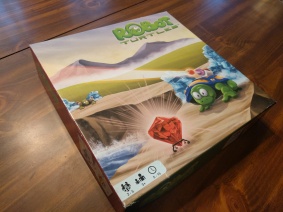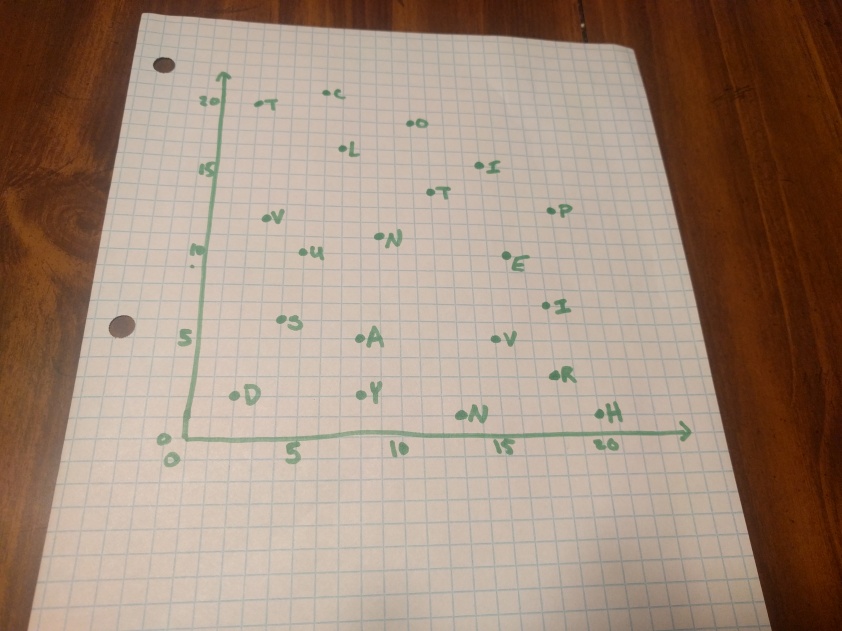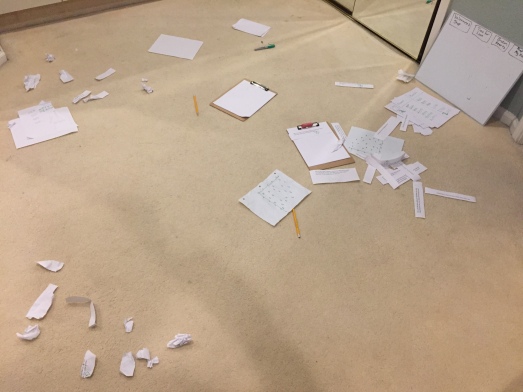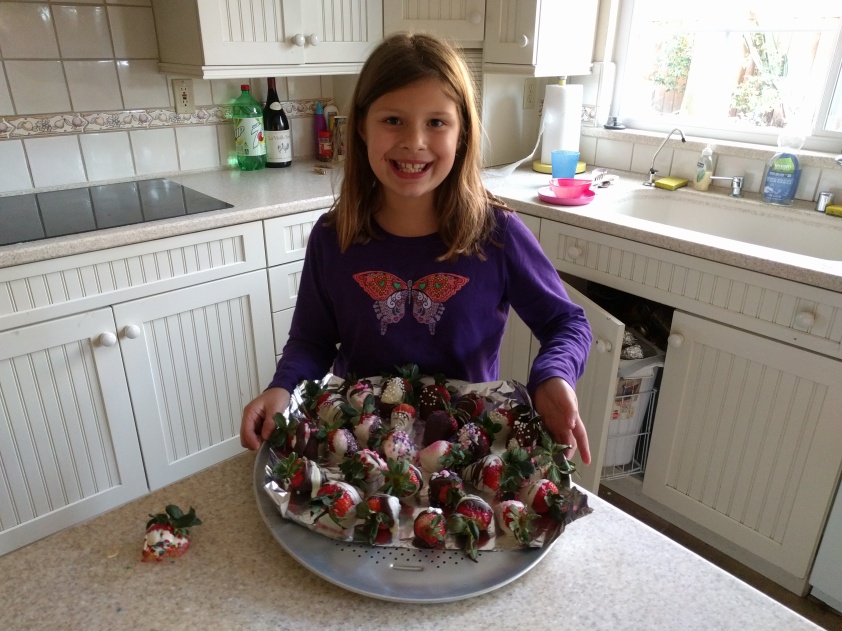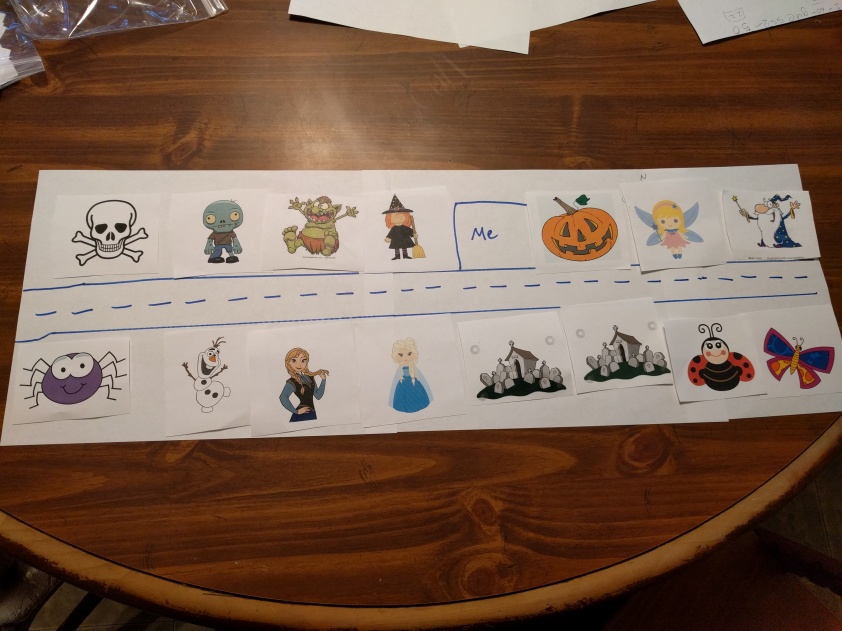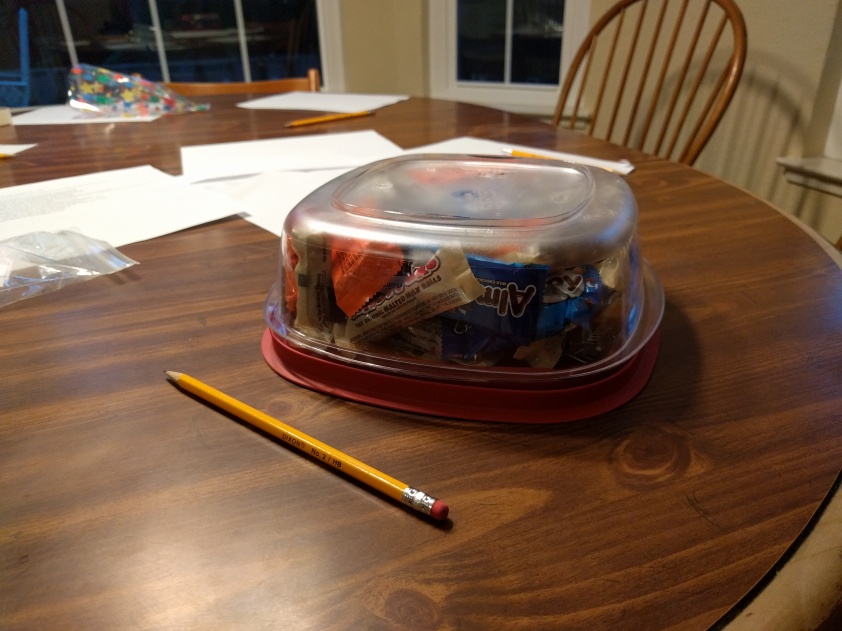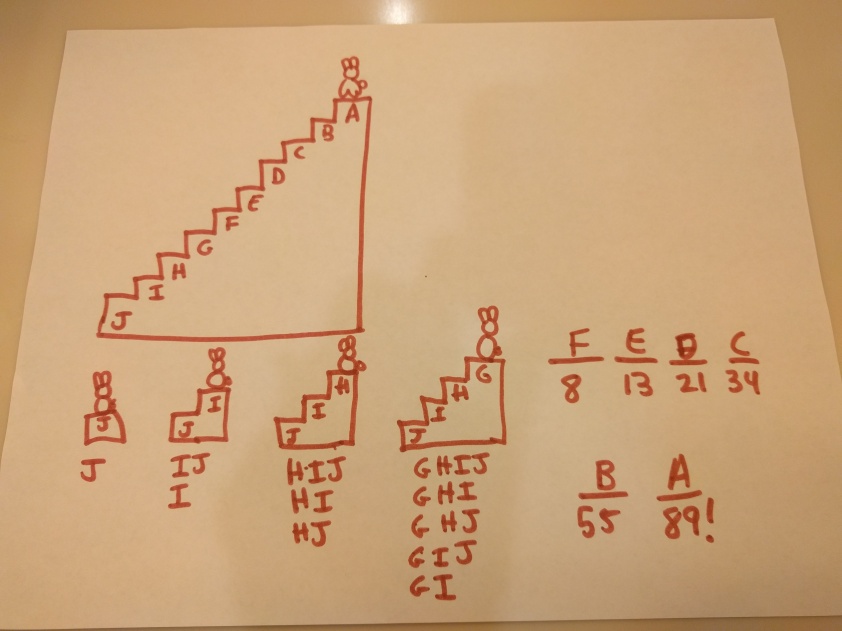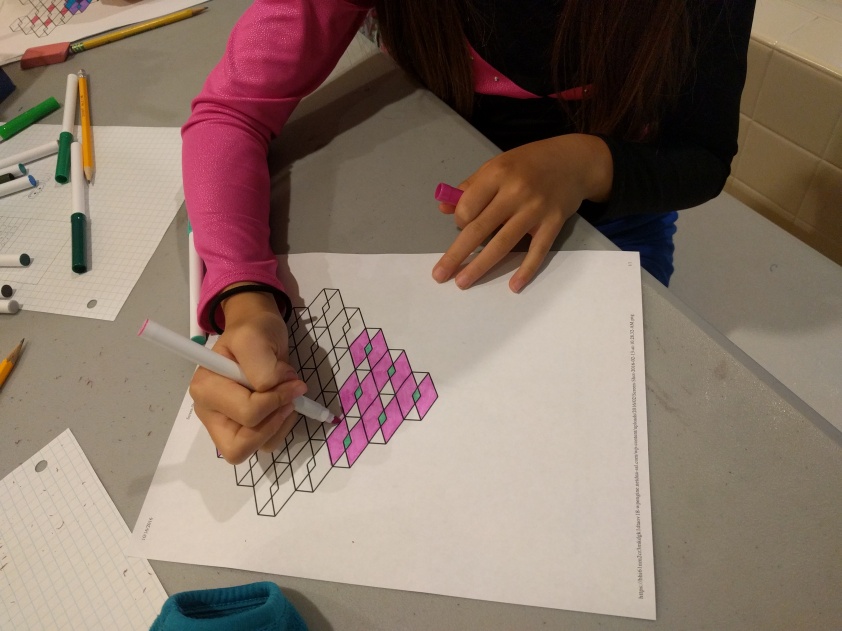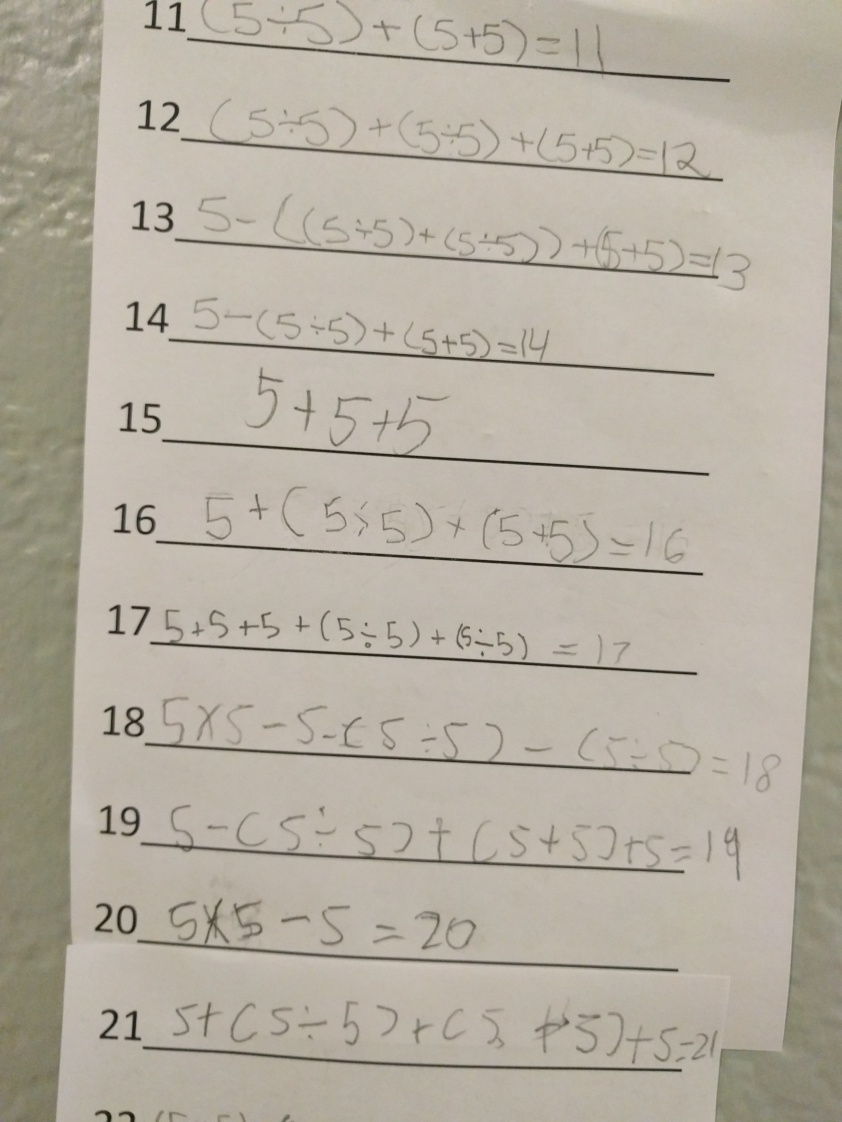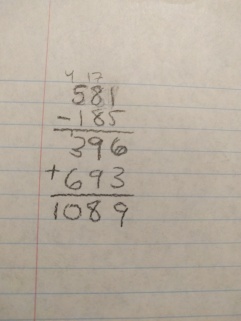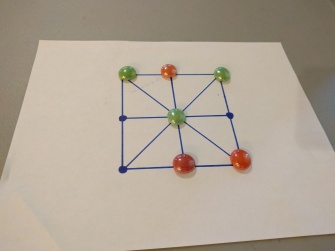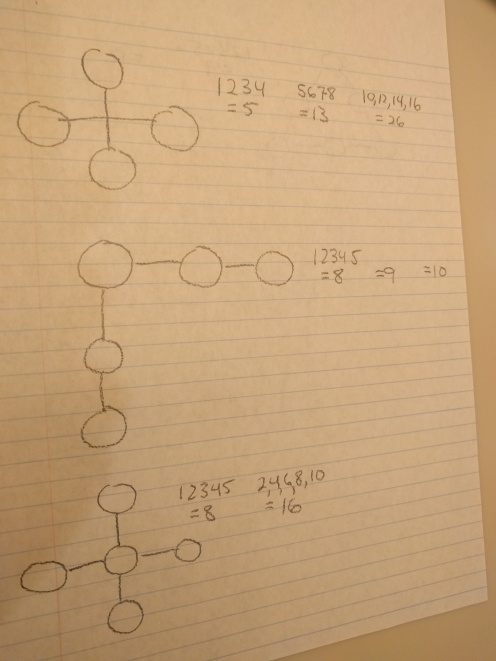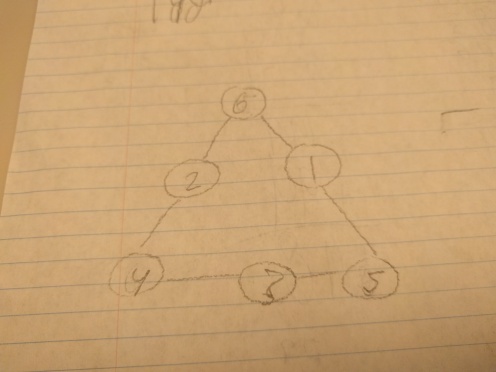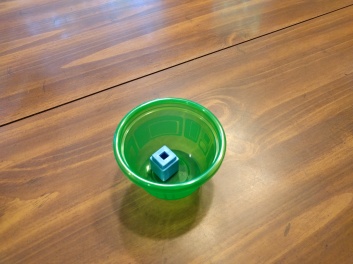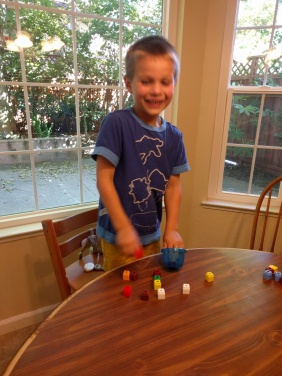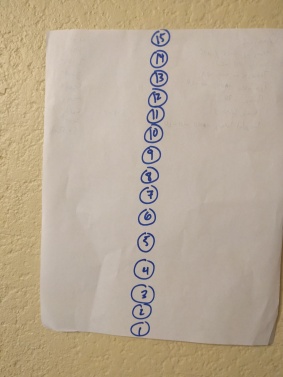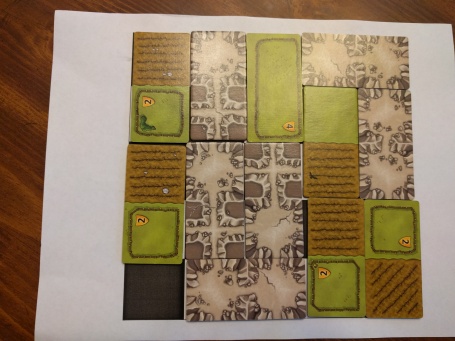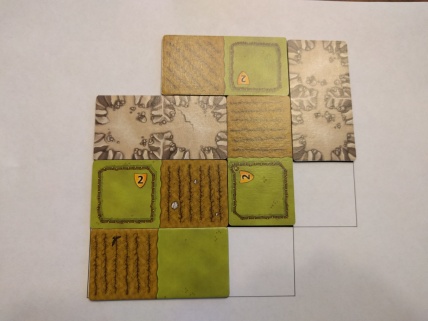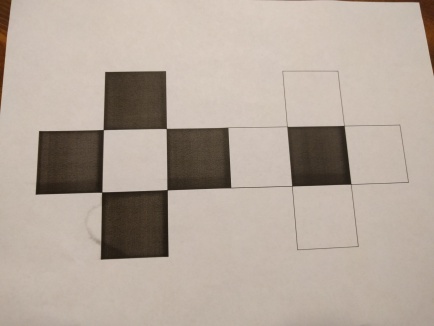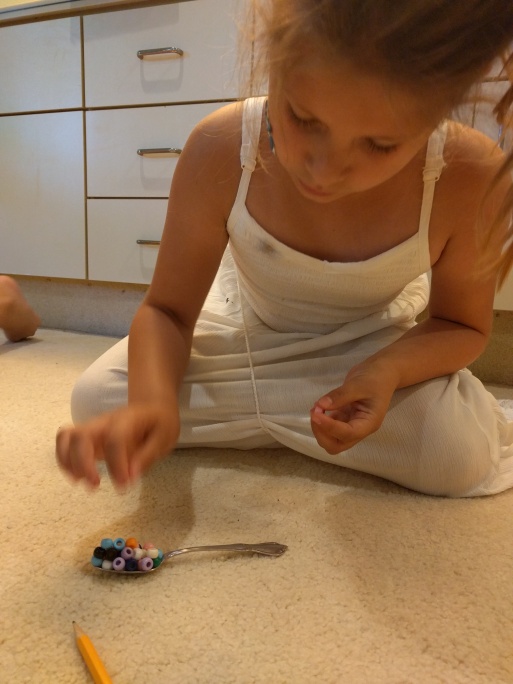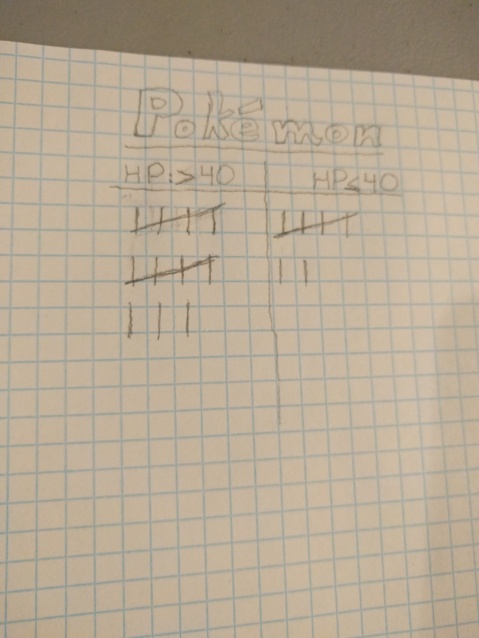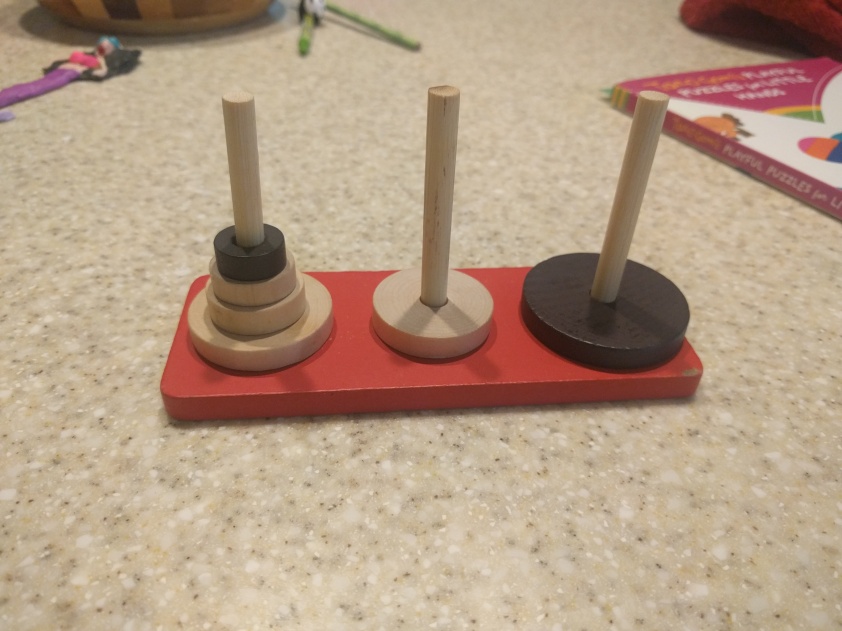The Activities
1. Topic: Units. Book: Dinosaur Deals by Murphy. In this book, a boy wants to get a T-Rex trading card. He finds a girl who will trade it for 3 Allosaurus cards, but the boy only has 1 Allosaurus. How can he get the T-Rex.
2. Topic: Sorting, Teamwork. We repeated the sorting activity from a few weeks ago, sorting the cards 1 – 104. This time we started by discussing possible strategies based on what went well last week. Then I timed the kids to see how fast their sort was, so we can try to get faster in the future.
3. Topic: Programming. We played the game Robot Turtles, with a few rules changes to make it more cooperative (in past circles some kids have gotten upset if their turtle falls behind):
- All turtles are trying to get to the same jewel.
- Turtles can walk on top of each other.
- Each person gets only one ‘laser’ card, so sometimes you have to work together to rescue a friend trapped behind ice blocks.
How did it go?
Sorting
First we discussed what worked well last time, and what strategies we could use this time. One kid said that sorting goes slowly when people hold cards in their hands (they spend a lot of time rummaging through the cards), so someone proposed laying the cards out on the ground so everyone can see. Then another kid suggested sorting the cards into groups of 10 at the start (1-9, 10-19, etc), then doing the big sort. I made labels for each group of ten cards, and put them around the table. Then I gave each kid 1/4th of the deck, and started the timer.
Sorting into decades went very smoothly, everyone was working together, and in parallel. There were some mistakes, for example someone misread 72 as 27, but overall progress was quick.
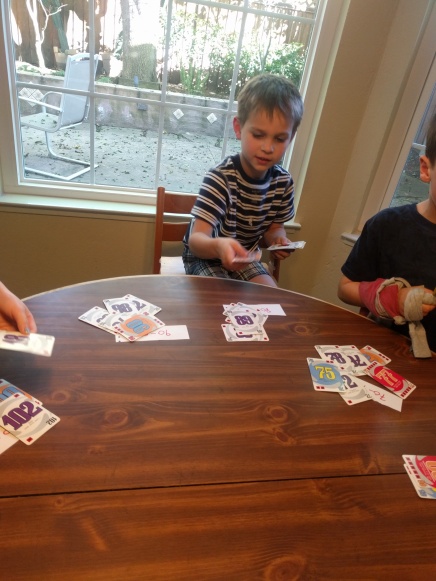
Sorting into piles of 10
Next, two of the kids took the 1-9 pile and started sorting it into the final spot on the ground. The other two kids picked up some random piles. One kid laid out the 100s, 70s, and 90s on the ground, but ended up mixing them all together. The other kid took just the forties, and laid them out in order 40 -49. Then he picked up the 50s and laid them out in order under that 40s.
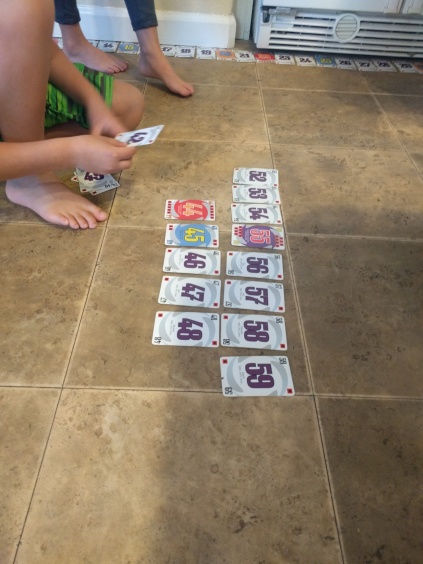
Sorting the 40s and 50s (soon to be undone by a friend)
Meanwhile the other two kids got up to the 40s. One of them came over and scooped up the row of 40s, completely mixing them up, and then resorted the cards into the final positions. This wasn’t too too slow, but seemed suboptimal 🙂
The sorting really slowed down once we got to the mixed up 80s, 90s, and 100s. Three kids had a bunch of random cards in their hands, and one kid was distractedly counting the already sorted cards. I pointed out that it seemed slow, and that people were holding cards, so they laid the cards down and eventually finished.
The final time was 16:30, which is not terrible, but definitely can be improved.
Afterward, I asked the kids what went well, and what could have gone better. One kid said it would be better if I didn’t take out some cards. At the start of the activity I randomly pulled out 7 cards from the deck, and told the kids. In practice this speeds up the sort a lot, because they don’t get stuck trying to find one card forever, and just move on, assuming that it must be one of the removed cards.
In this discussion, I demonstrated how one kid had sorted the 40s, and then the work was lost when the friend scooped them up. The kids then suggested picking the cards up in order. We tried this, and found that it was indeed quicker to lay down a sorted pile of ten cards than a shuffled one.
I also pointed out that the beginning was really fast because everyone was able to help at once, but no one had any strong ideas about how to make the full search parallelizable.
Robot Turtles
Most of the kids had played this before. Some groaned for some reason, when they saw it, but everyone seemed excited. There was a bit of extra energy left over from sorting, so this was a wild 10 minutes, but we did finish a couple puzzles. The tricky parts were that kids wanted to move their turtles while laying down their programming cards, and also, they would mix up the two turning directions without noticing. But overall they were much better at this than I expected. Their favorite part was using the lasers to rescue their friends.
